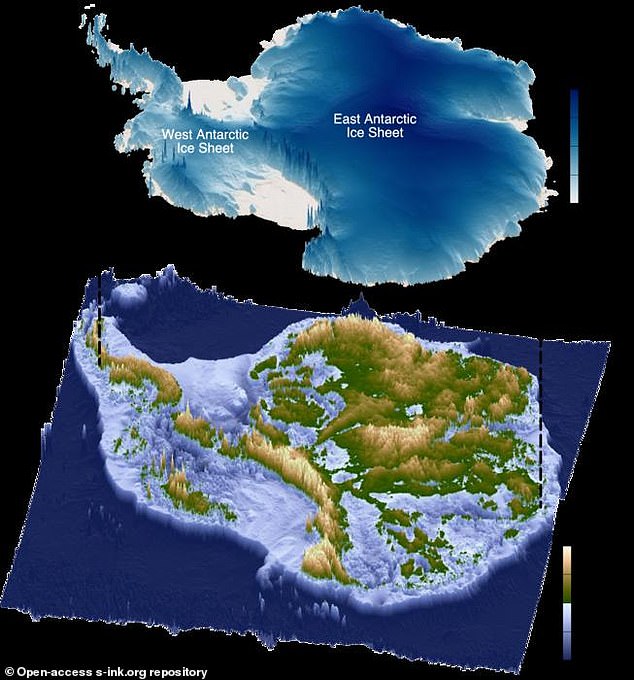Unveiling the Hidden Landscape of East Antarctica
For millions of years, a vast portion of Antarctica has been covered in ice. Now, scientists are beginning to uncover what lies beneath this frozen expanse. A recent study has revealed that the landscape of East Antarctica is far more complex and intriguing than previously thought. The research highlights the discovery of extensive flat surfaces hidden under the ice, which were once connected and shaped by ancient rivers following the separation of East Antarctica and Australia around 80 million years ago.
These newly discovered flat areas, now buried beneath the ice sheet, are separated by deep trenches that guide fast-moving glaciers. This unique topography has significant implications for understanding how ice flows and responds to climate change. The findings, published in Nature Geoscience, suggest that these flat surfaces may act as barriers to ice flow, potentially regulating the rate of ice loss in the region.
The Significance of Flat Surfaces
The study, led by Dr. Guy Paxman from Durham University, emphasizes the importance of these flat surfaces in shaping the behavior of the East Antarctic Ice Sheet. According to Dr. Paxman, the landscape hidden beneath the ice is one of the most mysterious on Earth, and the discovery of these flat areas has provided new insights into the region’s geological history.
The researchers found that these flat surfaces cover approximately 40% of the East Antarctic Ice Sheet’s 3,500km-long coastline between Princess Elizabeth Land and George V Land. Their preservation over tens of millions of years indicates that parts of the ice sheet have maintained the landscape rather than eroding it. This suggests that the region has experienced relatively stable conditions over an extended period.
Implications for Sea Level Rise
East Antarctica holds the potential to raise global sea levels by up to 52 meters if it were to melt entirely. Understanding the dynamics of the ice sheet is crucial for predicting future sea level changes. By incorporating the effects of these flat surfaces into models, scientists can refine their projections of how the ice sheet might respond to ongoing climate change.
Professor Neil Ross from Newcastle University, a co-author of the study, highlighted the significance of these findings. He noted that the research brings together various pieces of data to reveal the formation of these ancient surfaces and their role in influencing the current flow of ice. This knowledge will help improve predictions about how the East Antarctic Ice Sheet could evolve in a warming world.
Exploring the Past and Future
The team of researchers emphasized the need for further exploration of how these flat surfaces influence ice movement during past warmer climates. This includes drilling through the ice to retrieve rock samples from the flat surfaces, which could provide valuable information about when they were last free from ice cover. Such studies will enhance our understanding of how the ice around this large section of the East Antarctic margin will respond to future climate and ocean changes.
Mysterious Radio Signals in Antarctica
In addition to the geological discoveries, another intriguing phenomenon has been observed in Antarctica. A separate team of researchers recently detected mysterious radio signals emerging from deep within the ice. These signals were detected by the Antarctic Impulsive Transient Antenna (ANITA), an array of instruments designed to detect elusive particles called neutrinos. However, instead of detecting cosmic particles, the researchers were surprised to find signals emerging from the ice at seemingly impossible angles.
The findings, published in Physical Review Letters, challenge current understanding in particle physics. The strange radio pulses could indicate the presence of new forms of particles or interactions, or they might be related to mysterious dark matter. Dr. Stephanie Wissel, an astrophysicist from The Pennsylvania State University who worked on the ANITA team, noted that the radio waves detected were at steep angles, like 30 degrees below the surface of the ice. She emphasized that the anomalies remain unexplained, making this an exciting area of ongoing research.
As scientists continue to explore both the geological and physical mysteries of Antarctica, they are uncovering new layers of complexity that could reshape our understanding of the planet’s past and future.







